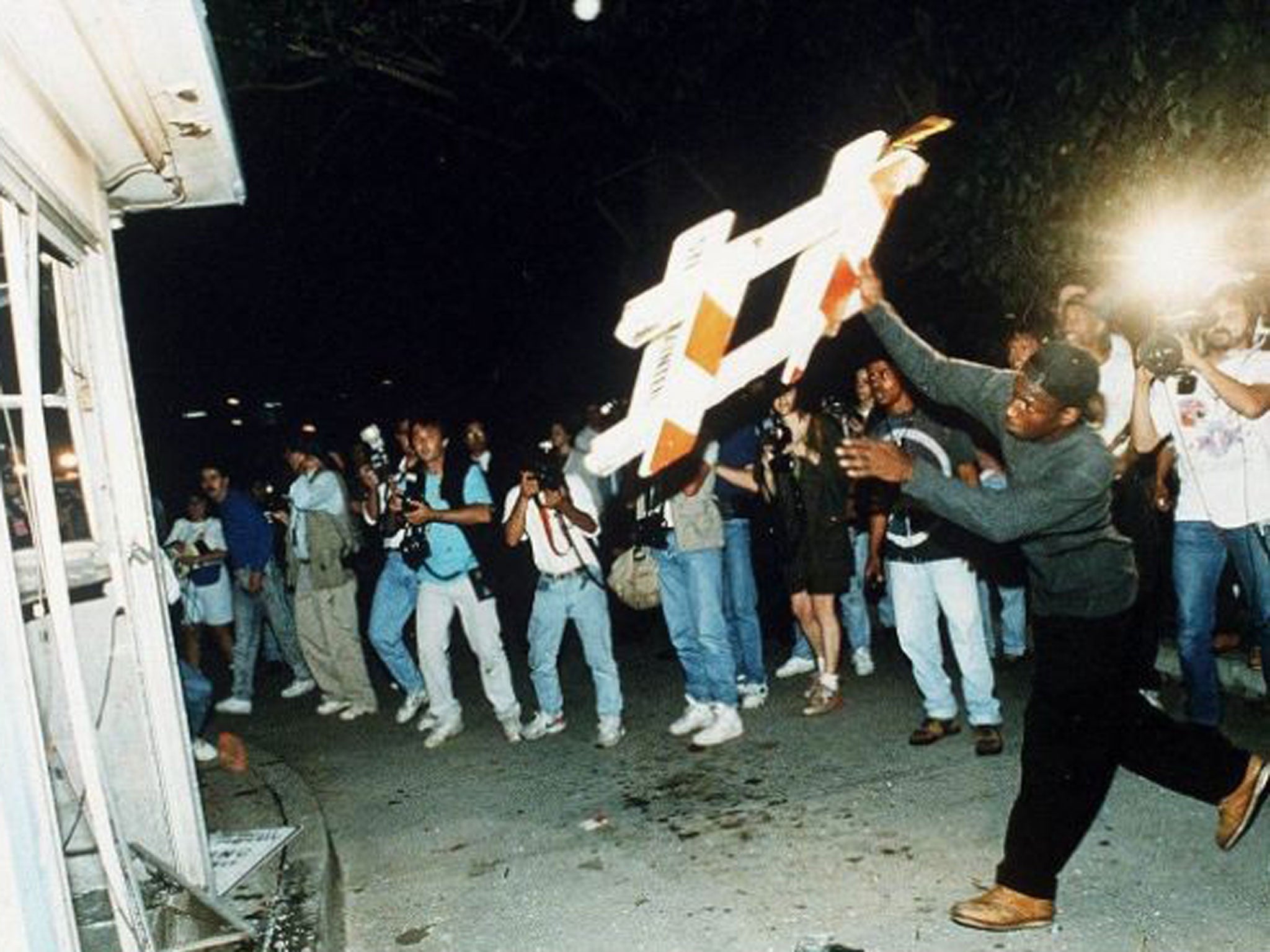All Involved by Ryan Gattis, book review: Blood on the streets of Los Angeles
A grim portrait of America's young and dispossessed, where gangs and guns rule

All involved begins with a sickening act of violence. A boy, Ernesto, is walking home through Lynwood, South Central Los Angeles after a 12-hour shift at a taco truck. It's April, 1992, and the city has detonated into riots following the acquittal of four police officers of using excessive violence against the black taxi driver, Rodney King.
Three guys jump Ernesto, beating him nearly senseless with a bat. Then they tie him by his ankles to the back of their car and drive for a few minutes before finishing him off with a knife. His body lies there for two days because the city's emergency services are too overwhelmed to pick him up. In the end a nurse, who tried to save the boy, pays $228 to a private ambulance company to take his body to a body dump.
This is an unflinching novel about those six days when Los Angeles burned and it only gains in strength from its uncanny timing, as America's big cities once again erupt in protest against allegedly racially motivated police violence.
Much of the action in All Involved – the title comes both from the slang for being involved in a gang and the LA police term for a conflagration – takes place in South Central, away from the actual race riots, where the city's Latino gangs saw the opportunity to wreak mayhem, and took it. As a portrait of a society igniting along entrenched tribal lines, it's both urgent and horribly resonant. It's narrated by 17 characters, including a graffiti artist, a fire-fighter and a Korean vigilante, whose lives are touched to varying degrees by Ernesto's death and by the response of his sister Payasa who instantly vows – and reaps – revenge. Like a Greek tragedy, blood begets blood in the disenfranchised streets of Lynwood so that before long, the novel has taken on a hideous, inexorable momentum.
Though a work of fiction, this novel was inspired by conversations with people involved with the Chicano gangs of the early 1990s and perhaps because of this it has a blisteringly persuasive documentary quality. The violence is astonishing – and no more so than in the chapter narrated by a seemingly psychotic, anonymous leader of Los Angeles' National Guard. They don't bother arresting a notorious gang leader who goes by the name of "Fate" but interrupt a barbecue he is attending with his homies to smash their bones with metal batons. There are glimmers of light – Clever, one of Fate's unimaginatively named sidekicks, is intent on finishing a college degree; there are occasional dreams of a life beyond. But there are also people like Lil Creeper, a drug addict who spreads havoc in the city like a grotesque court jester.
This sort of novel has an inevitable sociological dimension. Just what does it show us about this rarely seen underside of American culture where young men (and the odd woman) have narrowed their life to a point where only the barrel of a gun has meaning? That to join a gang is not so much to join a family but to cross an emotional Rubicon where the demands of loyalty are total and absolute. That the young are lost before they reach puberty: the peripheral figure of Watcher, for instance, is a 12-year-old drug dealer and pimp whose eyes are already "dead".
Gattis, who is an academic in LA, does not offer any answers but his claustrophobic, polyphonic portrait of this quasi-nihilistic generation tells its own story – of a hermetic, chaotic sub-culture, where the lack of alternative horizons is expressed literally by the fact that so few gang members venture beyond their home turf.
Despite its visceral element, the novel is surprisingly elegant and at times even beautiful, but mainly it is overwhelmingly physical. It winds you in the gut and blasts you in the brain. Its characters are ugly, though not all of them come into the same focus, but you keep with them, nonetheless. Several days on from reading it and I'm still reeling.
Join our commenting forum
Join thought-provoking conversations, follow other Independent readers and see their replies
Comments